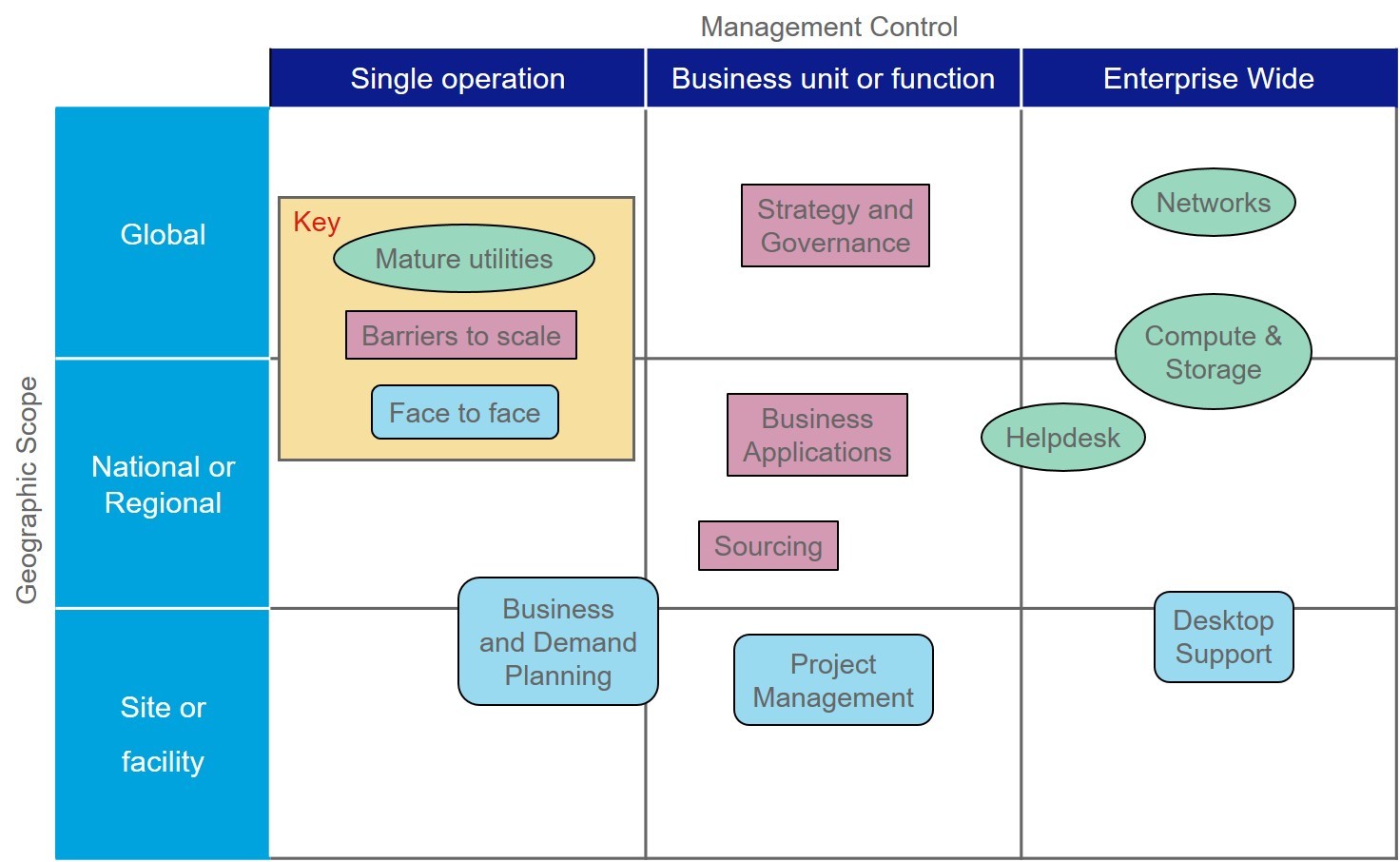How to organise IT on a global scale
There is quite a lot written about IT consolidation and centralisation.
- Best practice in business operations includes concepts such as having a “single source of the truth” to help understand and serve customers or make key business decisions. These sorts of concepts imply some centrally managed shared IT.
- Enterprise architects strive to understand, model and design business structures and supporting IT spanning whole enterprises. IT concepts and technologies such as Service Oriented Architecture and Cloud Computing are justified on the principles of maximising scale and re-use.
- Procurement specialists seek to rationalise suppliers and consolidate purchases for all categories of spend including IT products and services. Suppliers offer price and other inducements for sole supplier status.
- For a long time ERP suppliers have promoted their ability to provide a single, integrated solution to the needs of large businesses.
For relatively small organisations a single, enterprise-wide perspective on IT is quite realistic. For large organisations, particularly those which operate on a truly global scale, the reality is a lot more complex.
Large organisations find it very difficult to operate IT on a coordinated global basis. Many have multiple CIOs and IT teams with a regional or business unit focus. Even the large public cloud providers run multiple data centres and duplicate services around the world. Although they are not so easy to find there are commentators and researchers who are starting to question whether the monolithic ideal for IT is such a good idea and argue in favour of more complex, decentralised structures. So which model is the right one?
IT design defeats IT dogma
The answer is neither. Adopting any of these IT organisation dogmas is going to lead to disappointing results. In reality there are a range of forces which affect the efficiency and effectiveness of an IT organisation. Some of these forces create economies of scale and favour sharing and centralisation while others act in the opposite direction and reward customisation and fragmentation. As illustrated in the example below these drivers not only vary between organisations but also between different IT services within the same organisation. Choosing between high level models is no substitute for a proper organisation design. Only by understanding and balancing these different forces can CIOs attempt to develop an optimum structure.
Drivers of scale
- Large teams allow individuals to develop technical specialisation and allow team managers to optimise resource allocation, increasing both team and individual performance.
- Pooling requirements and presenting them as a package into the market opens up new sourcing options and gives buyers more pricing power.
- Grouping data and functionality together improves management information and allows greater automation.
- Combining financial resources makes it easier to invest in industrial grade infrastructure.
- Mergers are often justified on the basis of savings from consolidation and sharing.
Drivers of fragmentation
- Small teams can support more business specialisation and allow fine grained cost allocation.
- Large scale product and service contracts can challenge the delivery capability of even the largest suppliers and increase dependencies on a few suppliers or even a single supplier.
- Organisations of more than 10,000 - 20,000 staff are very difficult to coordinate as a single unit with common ways of working and integrated governance.
- Enterprises facing a fast pace of change find it hard to establish the stability required for sharing and large organisations which have centralised find it hard to remain agile.
- Businesses are better able to divest operations which are self sufficient.
In a series of blog post I will expand upon the design and implementation process which starts with an understanding of IT services. In the meantime add a comment or use the Twitter button below to let me know what you think.

